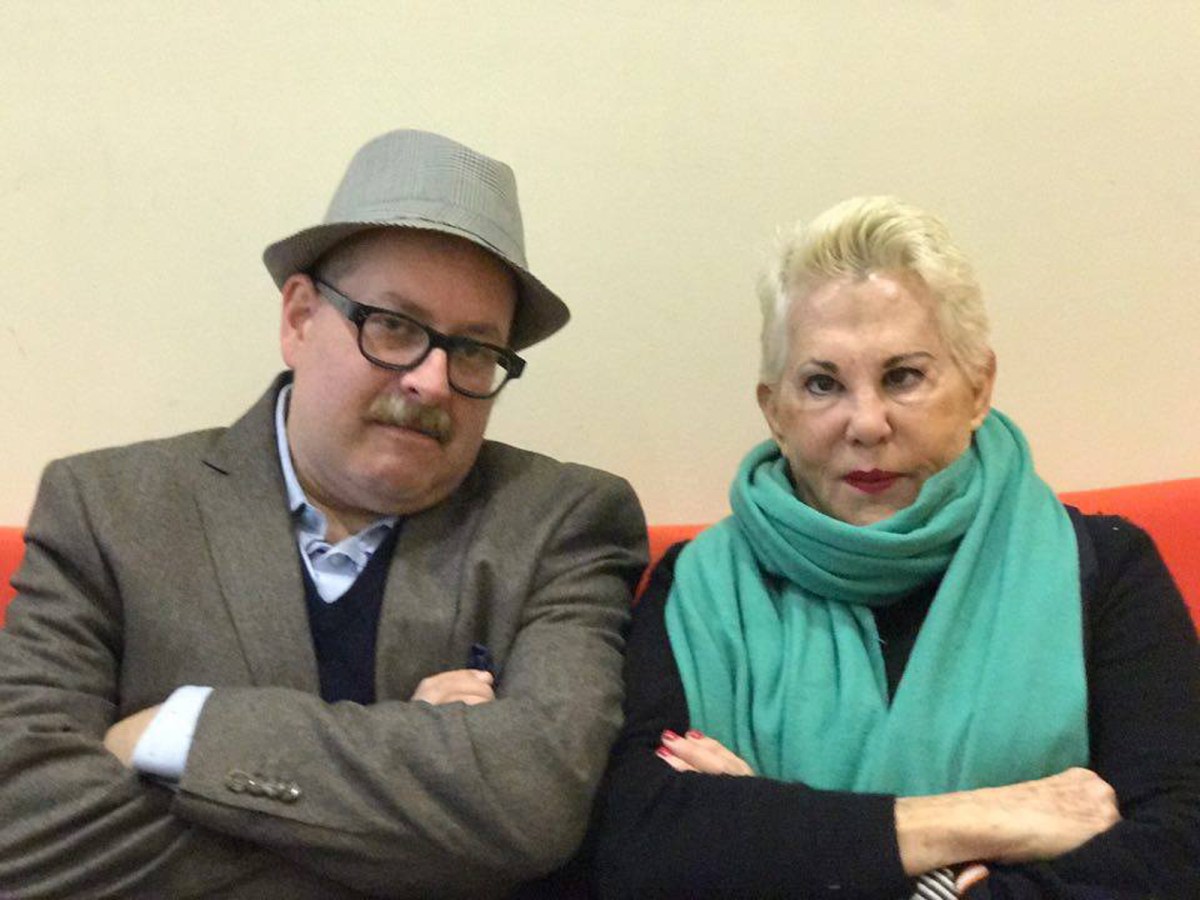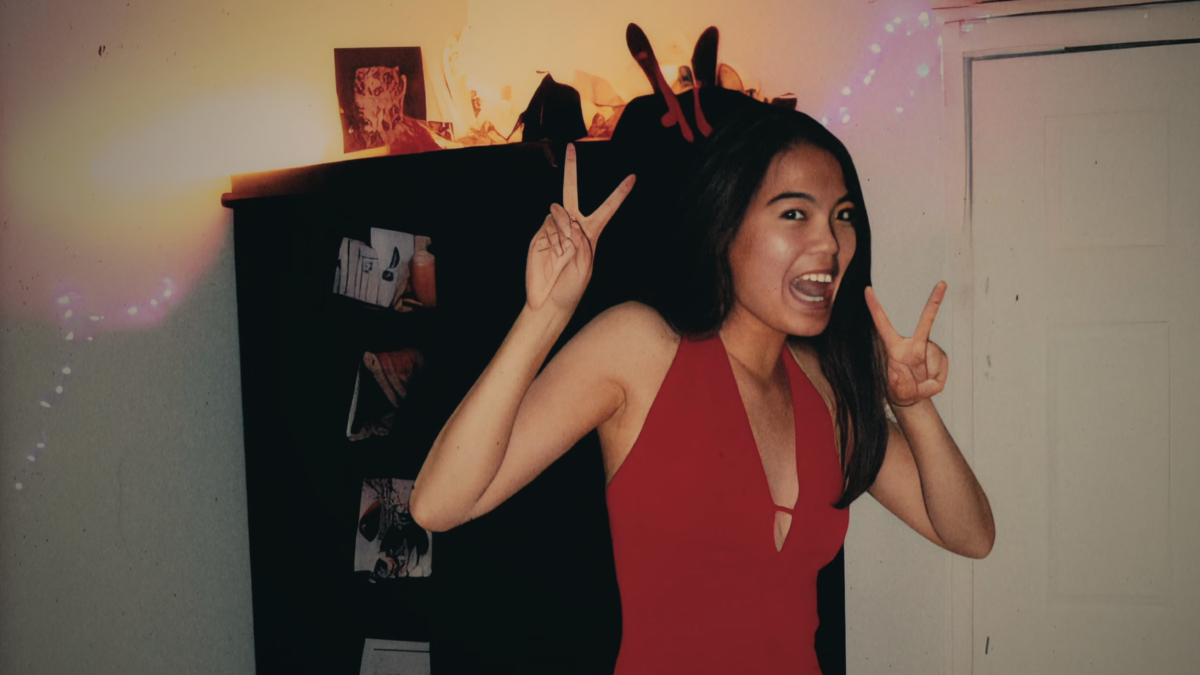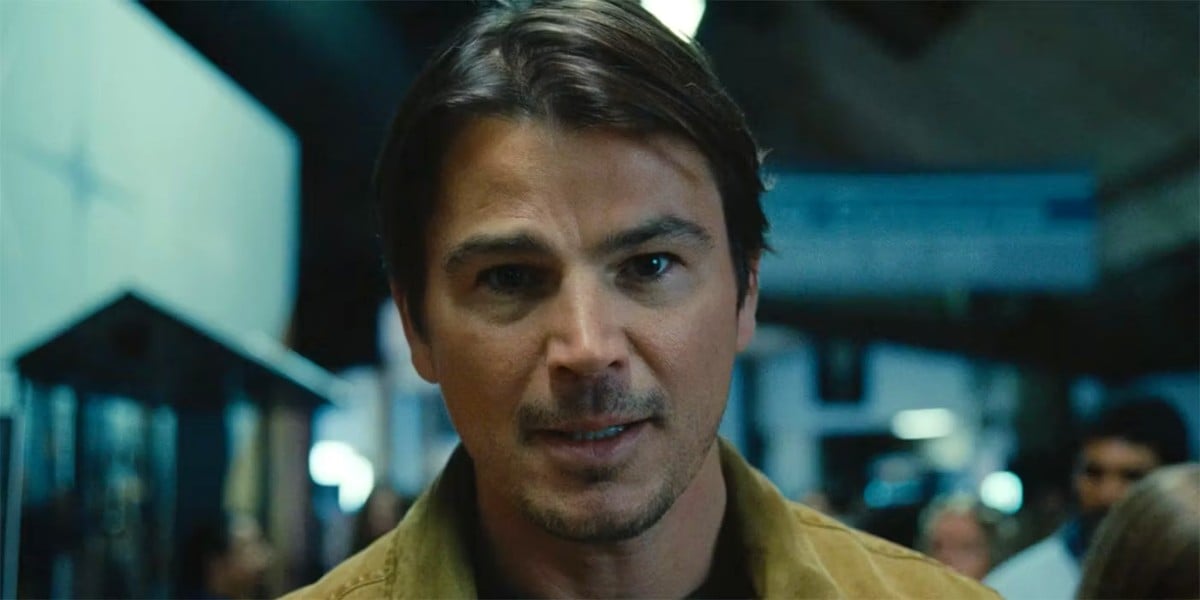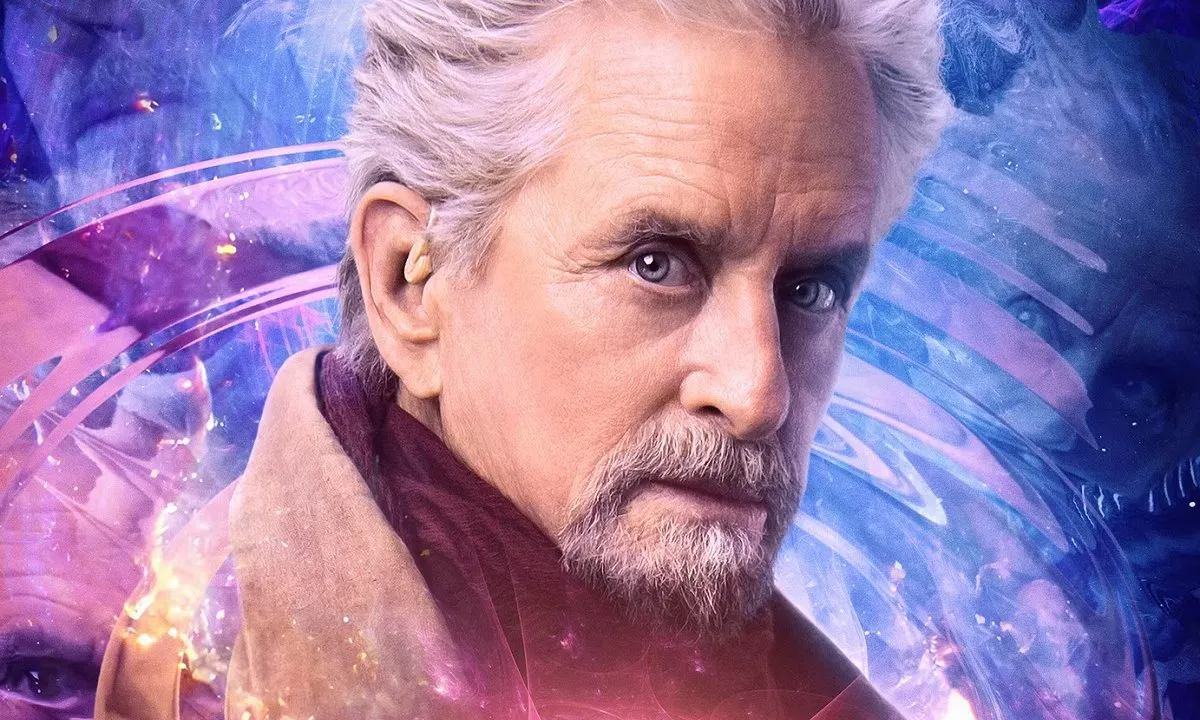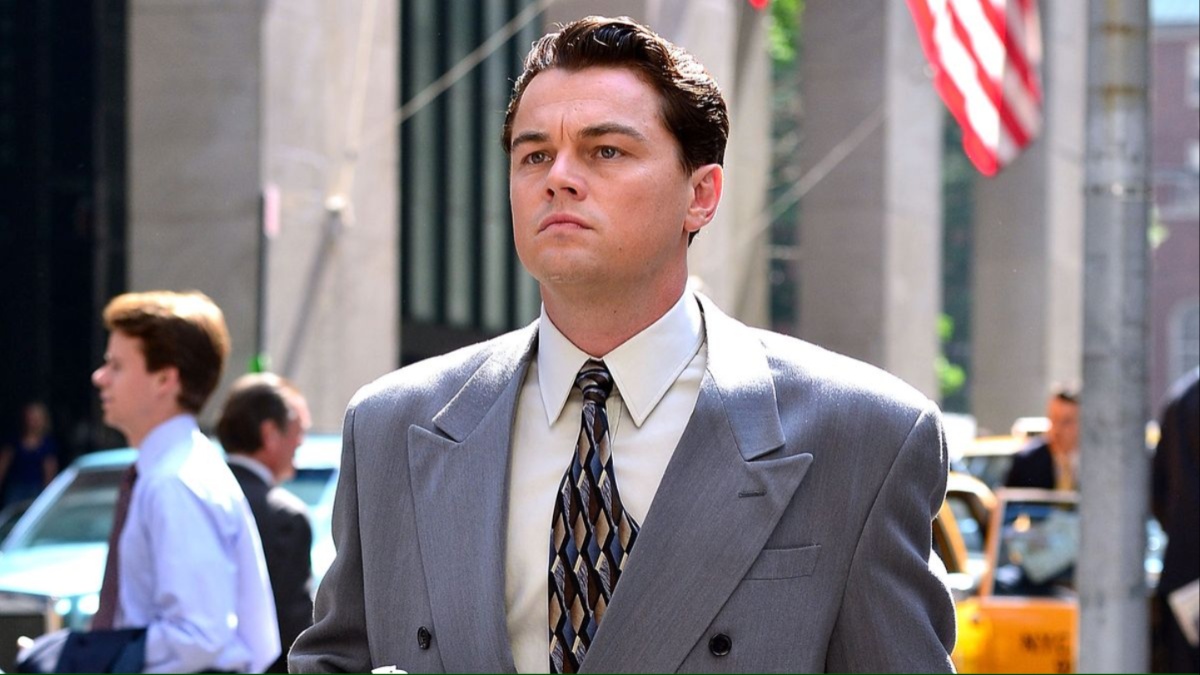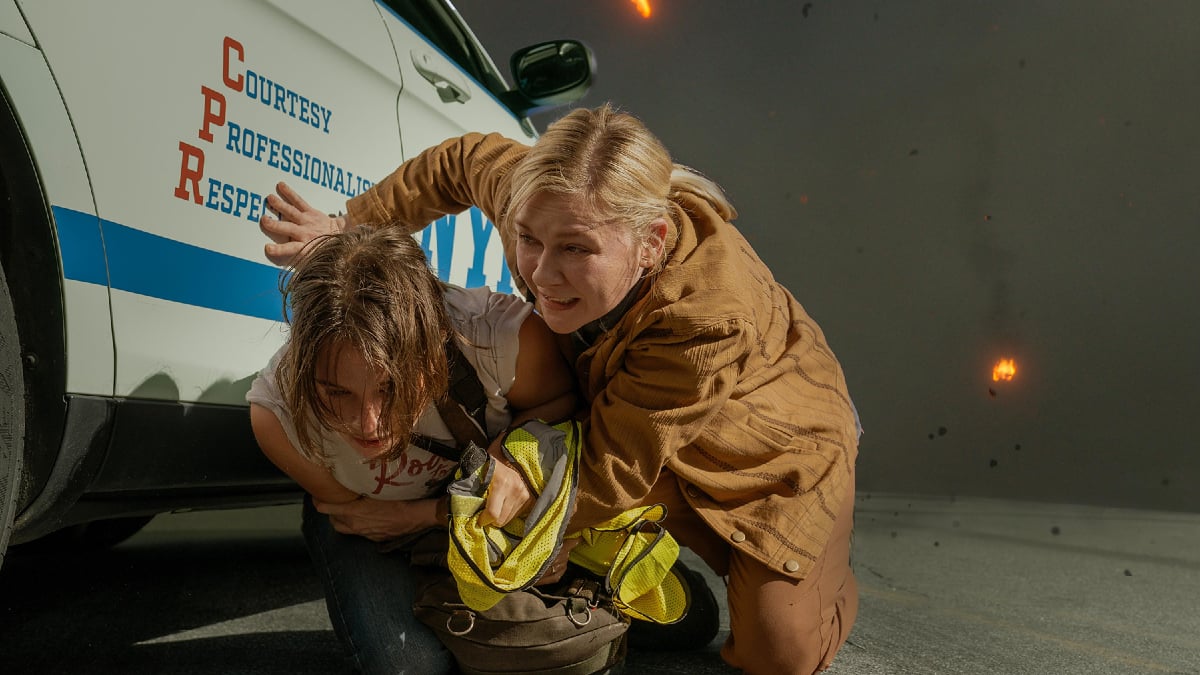Renowned photographer Rose Hartman isn’t one to let anything get in the way of her photos. Over a long career, Hartman has taken some of the most iconic images from the Studio 54 era of Mick and Bianca Jagger, Andy Warhol, and other fashion icons. A new documentary, The Incomparable Rose Hartman, turns that camera around and gives us a look at the photographer herself. Some call her rude and some call her brash, but no one can really deny she takes an amazing photo.
I got the opportunity to watch this film at DOC NYC and speak to director Øtis Mass and Hartman herself about the film alongside Nikki Mascali of High Regard Show. The two told us about their fights (one of which we see in the film), their favorite moments, and how The Incomparable Rose Hartman feels like a distinctly New York film.
(The interview has been edited for brevity and clarity, mostly because I stumble a lot.)
TMS (Charline): You’re so comfortable behind the camera but it seemed like a really different experience for you to be the subject.
Hartman: Well, although I’d been photographed at a lot of events, by Patrick McMullan and all those documentary photographers, that’s a very different thing to have a really one-on-one experience and going through 4 years. I can’t even take that in because it wasn’t as if we met every morning and then did some more shooting. I mean, months, weeks.
Mass: I was primarily a commercial spots directors and am still, but also I’m not going to pigeonhole myself. Who knows? But I would get gigs in the middle and that’s what put food on the table while I was shooting a crowd-sourced funded film that really had very humble roots.
Mascali: And how did the idea of this film come about?
Hartman: Otis is going to tell you because it seems like that questions was asked and I have one version and he has another and I thought it was like–
Mass: I can expand upon that–
Hartman: Please.
Mass: –that ties our two versions together. There was one key thing that you don’t realize, that you didn’t know. So anyway, I was invited to a Powerpoint presentation being given by a photographer that I didn’t know of, and walking in I saw a bunch of her collection up. I didn’t know who Rose Hartman was and I knew every single image, and I was like, “Wow! I’ve loved all of these photos separately not knowing who took them,” and then there was her presentation as well, when she was describing what was going on–especially the Studio 54 stuff I felt like I could kind of close my eyes and feel myself there. Cause I’m just a little too young to have been there but old enough to have been aware of it.
So the people she was next to, honestly, the image of hers that grabbed me first was Jerry Hall and Andy Warhol. That’s what really got my attention. And just to know that she–well, now I know she’s a genius herself–but to have been that close to a genius. You know, it’s hard to impress me, but, Andy Warhol, pretty awesome. So I was just really intrigued and her book was amazing and I brought along with me the executive producer of the company and her assistant–they were sitting near me, I was in the middle, I was whispering to her, I said, “I need to meet her. Will you please make contact for us?” because, unfortunately, in this world, having a go-between just seems to help. I’m not a self-promoter, I don’t like doing it, so definitely having someone to promote for you, that’s why I couldn’t do any of the celebrity outreach, like, I needed my producer to do that.
So after it ended she went, basically, I sent Sally [Antonacchio] over to meet Rose and she’s the executive producer of the film–one of them, but the main one. And they had a lunch together and then I was set up with a lunch and the idea at that point–I wasn’t really focused on features, was that I thought I might make what I was calling a longer-format, a 3 minute piece to promote her book for my reel and for promotion. Cause i just loved the subject matter and we had our first lunch together and I saw just that there was a lot more there. And I knew after that lunch, I said “I think there’s a feature here.” And then started the journey.
Mascali: Did you have any trepidations? Being the subject?
Rose: None, to be quite honest throughout my life I had known different filmmakers, etc. and they would say, “Oh, I think you’d be a very interesting subject” and I’d say “Great!” but it never went past that brief conversation. But I had it somewhere in the back of my mind, and again when we all had the lunch in the village. It was I think very comfortable and I felt–I don’t think I’ve ever said this–that I could trust Otis with, you know, my life actually. Because it’s my reputation
Mass: I mean, yes, but she did ask me, “Why should I let you do this film? Cause you’re not in the fashion industry,” and my answer was, “Specifically because I’m not in the fashion industry. I have fresh eyes and a very genuine intellectual curiosity about this and about you. And I’m going to notice all the details that everyone else takes for granted because they’re in that world.”
Hartman: I forgot that. That was the question because I’m very involved with people in the world of style, I like to say. And many of the witnesses of the film are obviously from that world, so Otis did come from a very different world. He’d never been to a fashion show and I think our first get-together was going to Carolina Herrera, which you cannot get better than that, being in this case in Lincoln Center and being surrounded by not only the models, but the entire audience which is made of the most important people in New York. And Otis, what did you say? “Here we are.” He’d never been and it was like going to the moon.
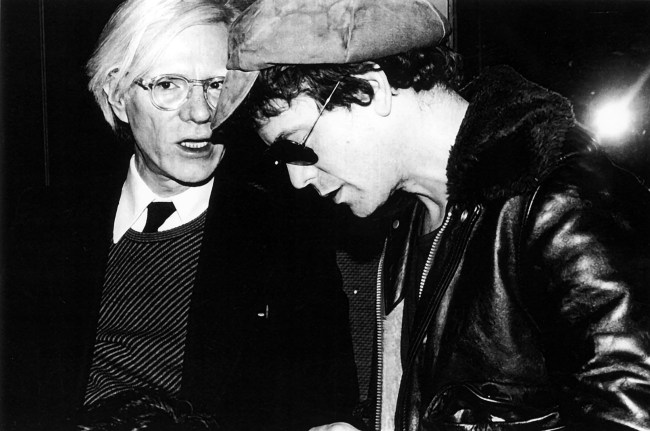
Andy Warhol & Lou Reed, Studio 54 party – 1978 PHOTO CREDIT: Rose Hartman / The Artists Company
Mascali: What was that moment like for you? Being among all that for the very first time while you’re making this.
Mass: Well, I mean I’ve been in commercials and I’m not star-struck per se. It was interesting, it was cool. I think I would like to go if I’m VIP instead of–I kept getting downgraded, like I was supposed to be sitting next to Rose and then I was in, like, across the way from her and then I was in the standing-room and then I was in the standing -oom behind the standing-room. I had a long lens with me.
Hartman: I want to say, he had a long lens and it was almost as if you were right there. I was amazed by that because I couldn’t even see where Otis was and the lights are so strong. And what happened when they said, “Ok take your seats,” I had really been given a seat in the second row but I though “Mmm, there’s an empty seat” and I grabbed it and so he had a straight line down to me and then
Mass: She knew generally where I would be.
Hartman: Yeah, just generally. But it was definitely not close by.
Mass: And it’s funny because we talk about access in the movie and I didn’t even bring up the fact that, yeah, she saw her moment and–
Mascali: Snatched it?
Hartman: Yeah, I think snatch is–
Mass: It was an opportunity!
Hartman: and it wasn’t taking anyone else’s seat because when they say “ok” and they’re picking up the cart, that’s the moment where no longer can anyone be seated. But I know this because I’ve been to a thousand shows.
Mass: Also, it’s a very positive representation because I never wanted to make it seem like she was sneaky or anything. It was, no, it’s like this was opportunity. And the scene, to me, is so important because no one was shooting other photographers shooting people in the 70s, 80s, or 90s even and I wanted to see her shooting and show what she was getting. So her getting that seat got her a much better vantage that I like the photos enough that they made the film, so I could really show her process. And also how she is so spontaneous, her instinct–that’s what I think is probably your best gift.
Hartman: Thank you. I like being in these interviews so I get a compliment occasionally from the director. It was, I thought, a momentous day. It was pouring out, it was probably the darkest, dreariest day physically but then once we were inside there is magic. And of course, Carolina always starts Fashion Week so it’s a very exciting moment. 10 AM, Monday morning, and then boom boom it goes on to many other designers but she’s like the Queen Bee really.
TMS: Speaking of compliments, and correct me if I’m wrong, but there’s one moment where we hear Otis’ voice and I’m really curious about that scene.
Mass: The fight?
TMS: It’s such a fun moment for me that shows the dynamic between you two while making this movie. I was wondering if you could tell me more about why you put that in and maybe Rose, how you responded to that.
Mass: What sometimes comes out in Q&A or doesn’t–people ask about the scene–a lot of people they enjoy it. It’s there because people don’t necessarily know in which order I shot the film and there were kind of three big major interviews with Rose. And the only time I had shot her before that day–that was the first big interview–and the only time I’d shot her before that day was Carolina. So we were still feeling each other out and I am often overly polite. I grew up in the South.
Since it was so early in the process, and it was a very real moment, it was truly the moment I realized being polite does not work with Rose. She doesn’t respect it. Not polite, but just being demure–demurring to her. She wants opinions, she wants directness. And I also realized she can’t create this energy on her own, she needs someone to bounce it off of too. So I also knew that I had to be more involved in the interview process, so it’s a funny moment. I hope she’s fallen in love with it. For a while, she really wanted us to take it out and I felt it wasn’t simply entertaining, it was–
Mascali: A pivotal moment.
Mass: Yeah, It was right in the beginning. I didn’t need to say it, but it was very real and it was great. I mean, how can you not love someone after being with them for this long.
Mascali: And what made you come around to having that in the movie?
Hartman: Well, first of all, it’s Otis’ movie. And I think that’s my answer. I’m very finicky about language. I think word are very impactful and they were impactful, and of course I’ve accepted it because I really do love the film and I found myself with tears in my eyes which I didn’t have when I was back in Austin. I don’t know what changed. Maybe it was because a number of the people in the film were in the audience last night and we had had such a wonderful celebration with a dear friend of mind, Omar at his restaurant. So it was just leading up, up, up and I though, “Oh my god, I mean, this is really interesting,” because I was listening again to the audience and they would laugh and I love that. They didn’t just sit there. In Austin, there was more quiet–it was respectful, but they didn’t really get it and somebody said, “It’s really kind of a New York story.” Even his comments are perhaps more appropriate for New York or LA.
TMS: We hear so many adjectives to describe Rose in the movie, why is “incomparable” the best one?
Mass: It was really funny because it was like 4 years of arguing over film titles…she had started to use “incomparable” in her books and it had just been “the Rose Hartman Project” for so long and we had been in social media, etc.
…Ultimately, I felt from an advertising perspective we’ve created a brand, she has her own brand, having synergy with the books she’s putting out and just knowing everyone knew this project, and she is the incomparable Rose Hartman. I mean, I know there are other people out there with boisterous personalities who are photographers, but I don’t think you can compare Rose with anyone. She is, in all honesty, she is an original and she is a risk-taker and I’m glad that some of that has rubbed off on me.
Mascali: Has being alongside her for so long, has that kind of affected how your personality is now?
Mass: I think it’d be impossible not to. I think she finds herself in situations being a little bit softer–especially when I ask her to. But Rose did and does inspire me. To see what she was able to do with her life inspired me to put the amount of work that I needed to do to get this film to the point it is and I’m so happy I did it.
I also had a huge learning curve, all the industries are so different and insular from each other. And this is indie documentary, but advertising–in terms of after we shot the film and after it was edited, everything beyond that was so out of my league. And I had to learn it, so I could make the correct decisions for the film and we seem to be doing pretty ok so far.
TMS: Rose, you have such a large body of work and I’m sure you have even more stories.
Rose: I have millions of stories.
TMS: Was it hard to narrow down just a handful for the film?
Rose: Well, I would say that there are certainly images that are iconic for me and so whenever I’m asked to talk about my work or, for example, the NY Times did a beautiful 12 photo dot com, Teen Magazine was so thrilled. Basically, when editors choose, they usually choose the images that I love most. I mean, without having any discussion. In a sense, I think that through so many years these images have been published in various magazines and in my books Incomparable Women of Style, Incomparable Couples, that’s it. I’m always editing in my mind so if you ask me “Well, Rose give me ten of your favorite images or the ones you think are classic” it’s always going to be Jerry and Andy because, of course it was Beauty and the Beast.
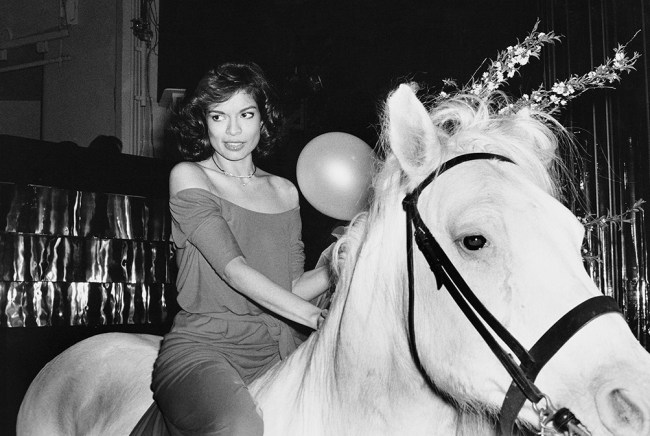
Bianca Jagger on a white horse that happened to be inside Studio 54 on her birthday in 1977. PHOTO CREDIT: Rose Hartman / The Artists Company
Mascali: Thinking back to that time, you shot the most glamorous people the city had seen. Is there somebody today you think can capture that kind of magic?
Hartman: It’s a question that has been asked of me very recently. I would say Cate Blanchett, whom I adore as an actor and I adore her style and chameleon-like ways for each and every role. But I can’t say that I’m sitting here and saying “Oh my god, I wish I could photograph, you know, like Bella Hadid.” To me those girls cannot compare to Stephanie Seymour, Cindy, Crawford, or Naomi, or Cate or Linda. They were the women who wouldn’t get up for less than 10,000 dollars a day, you know.
Mascali: Who do you think back then had the best style of Studio 54?
Hartman: I would say so many people did, and Jerry Hall was fantastic. She was like a goddess–the long golden hair. Beautiful on every level. People came and went, they weren’t there every night so one party you might have Debbie Harry who had her inimitable style. I don’t know if I could mention one at all, could you?
Mass: Of yours? Yes. Well, a couple of them come to mind but the first is Grace Jones.
Hartman: That’s a good answer.
Mass: Both because of her beauty, but also her style was very unique. Rose is, it’s kind of like Rose to a degree I call her–there’s not a stitch of disco in this film–and I knew that wasn’t going to happen from day one of shooting because it would have been expected and I didn’t want this to be marginalized as a Studio 54 film which is something that recently–it’s easy to identify her by Bianca, but that’s what people don’t understand. That all of these other iconic images throughout a 40 year plus career–it’s just not done. Princess Di, Kennedy Jr.–we didn’t hear the groan. I was expecting to hear that last night cause there was a final club that saw it up in Westchester, so I had seen it with a small group of New Yorkers and that’s why I knew last night was going to be special because the energy there was completely different. There was this “aww.” Not a bad groan, but a collected “What a tragedy.” It never had that reaction, so I knew that screening in NY was going to have it’s own–that’s probably why I was bawling at the beginning of it. I was like, “I’ve seen this film a hundred times!”
Mascali: She’s an icon of photographer here, so it’s like bringing it home.
Mass: Kate Moss. There’s been a lot of features done on her and you know I would’ve curated some of them differently. I’m like, no, I would have put this one in the mix, but that’s me. Everybody’s got their own thing. Of course, I want her exposure to be the best possible exposure. Not that any photos are bad, I think some are more iconic or special than others.
TMS: Something great about having such a big body of work is that everyone latches onto something different and in that spirit, is there a moment in the film that either of you would call your favorite?
Harman: Well I love to swim, that’s my passion. Otis was really rather, shall we say, clever. He swam under me and people asked, “Well who was doing that?” as if there was some little angel–but he actually got in the pool and had to hold his breath and I was swimming. This was in the producer’s pool and it was just a beautiful day. That was pretty impressive to me, because that’s one of my great passions. When I travel anywhere in the world I always ask “Do you have a pool?” the same way somebody else will say “Do you have a golf course?” That was something very special.
Mass: That’s my favorite scene in the film.
Hartman: And we’ve never discussed this before.
Mass: Very quickly, I started off in the advertising world in more of the fashion/beauty area and really hated the personalities, and moved over to more of a documentary style because I really found a knack for talking to people and getting into their heads. But I married the two. I wanted it to be beautiful and documentary–didn’t have to be shaky, Blair Witch-y, and low-fi. And commercial directors worry about 30 seconds, not 71 minutes. So to me, it’s a visual palette cleanser–it takes you from one part of the film to the next, just a little breather that lets you absorb what you’ve already seen and get ready for what’s coming up.
Actually, I think what’s directly after that is the fight. It’s tranquility right before the fight but I wanted a pause in the film and I just thought it was beautiful. I shot it and also our color-corrector Chris who’s in my opinion probably the best colorist in New York–he was able to take what I did and give it a little more tszuj–some of the amber tones.
Hartman: I think it was very romantic actually. It was unexpected because I didn’t know what would be used and what would be in the cutting room floor and I found that very moving visually. And I think you did really achieve something by using that in the center of the film. And I would like to make a comment about the editor, a young man named Ian [Mayer] who took a bow last night. He’s very shy, but he is beyond brilliant and I always think the editor, in a way, is unsung. I think he really deserves so much praise in that Otis could find somebody to work with, to achieve his goals.
Mass: He really was incredible. The story of a documentary–if you’re making a real documentary–is told in the edit. I tried to go in not having an agenda, trying to cover topics and see where they go in the edit. We don’t really have writing credit, but I’ve always in private and last night in public I called him my co-writer Ian Mayer, because if I had to put that credit I would say we wrote it together. We talked about story threads and there’s so much that didn’t make it into the film including entire interviews.
Hartman: And now people are saying, “Why did you leave out so-and-so?” I said “Well, Otis had to make the decision who would lend themselves to moving the story ahead,” and obviously it couldn’t be everybody who he had actually interviewed because it would go on forever. Maybe we need Part 2.
Mass: Or there could be a director’s cut. I hadn’t thought about it, I just thought about it right now to explore.
Hartman: And a lot of interesting people, I might add. I mean, gallerists, artists, he really gathered so many more elements than you can see.
Mass: There was so much footage that it was overwhelming and I wanted Ian’s biased eye. If there was something missing that I remembered and thought should be in there, we’d talk about it and sometimes it wouldn’t go in and sometimes it would. But I was really trusting his instincts as he whiddled down the best moments and that’s what he did. Nobody was ignored, but we were covering a subject and the most intriguing lines about that subject made it into the film.
TMS: You were saying you really didn’t want it to be a puff piece, you wanted it to be….
Hartman: Oh, it surely is not.
Mass: Yeah, which is why it’s so great.
Hartman: It’s definitely not a puff piece.
Mass: I knew, it was a process of getting Rose to be comfortable in front of the camera, to let down her guard. And I, just, I think you are glamorous in the film first of all, so she wanted to be glamorized and not humanized. And I wanted the opposite, and I think we met somewhere in the middle.
Hartman: I think that’s absolutely apt. I said, “Humanized? No I don’t need that.”
Mass: I brought up the Joan Rivers documentary often as an example of this woman who allowed herself to be naked, to a degree, without makeup. That’s what made that compelling and that’s what made people identify with the film and my film is essentially a character study–a very interesting woman who is a wonderful example for women everywhere.
Mascali: Going back to the early days of your career, is there any advice you’d give to Rose after she decided “photography’s the way I want to go?”
Hartman: I don’t think I was ever a business woman. That comes out in the film. I was just interested in being in situations where I could capture people who I thought were worthy of being captured. So, no.
Mass: I think though, in terms of the Catherine Deneuve, I think your reaction to seeing it in print though, what was your reaction to that? It was kind of the first major photo of yours right?
Hartman: My first assignment was actually going to the Hemingway wedding and meeting Mrs. Hemingway the widow of, which was beyond exciting and I was actually doing it for an airline magazine. And I was told that if I went to her home in a car, she would shoot the wheel because she didn’t want anyone showing up. And I rented a bicycle because I’m a bicyclist and I remember going there and saying to Mary, “Where are you most comfortable?” and she said, “lying in a hammock” and for me that was really the beginning. And then I couldn’t believe it was in double-page and there she was lying down. And I was bitten, or addicted because I do love to see my images published. If I open Vanity Fair and see an image of mine, I would be really thrilled and I’m not thrilled easily.
Mass: I mean, she’s critical and that’s good. This film would not be as good without her behind-the-scenes as well.
You can learn more about The Incomparable Rose Hartman here.
(Images Courtesy of Mass and Hartman)
Want more stories like this? Become a subscriber and support the site!
—The Mary Sue has a strict comment policy that forbids, but is not limited to, personal insults toward anyone, hate speech, and trolling.—
Follow The Mary Sue on Twitter, Facebook, Tumblr, Pinterest, & Google+.



